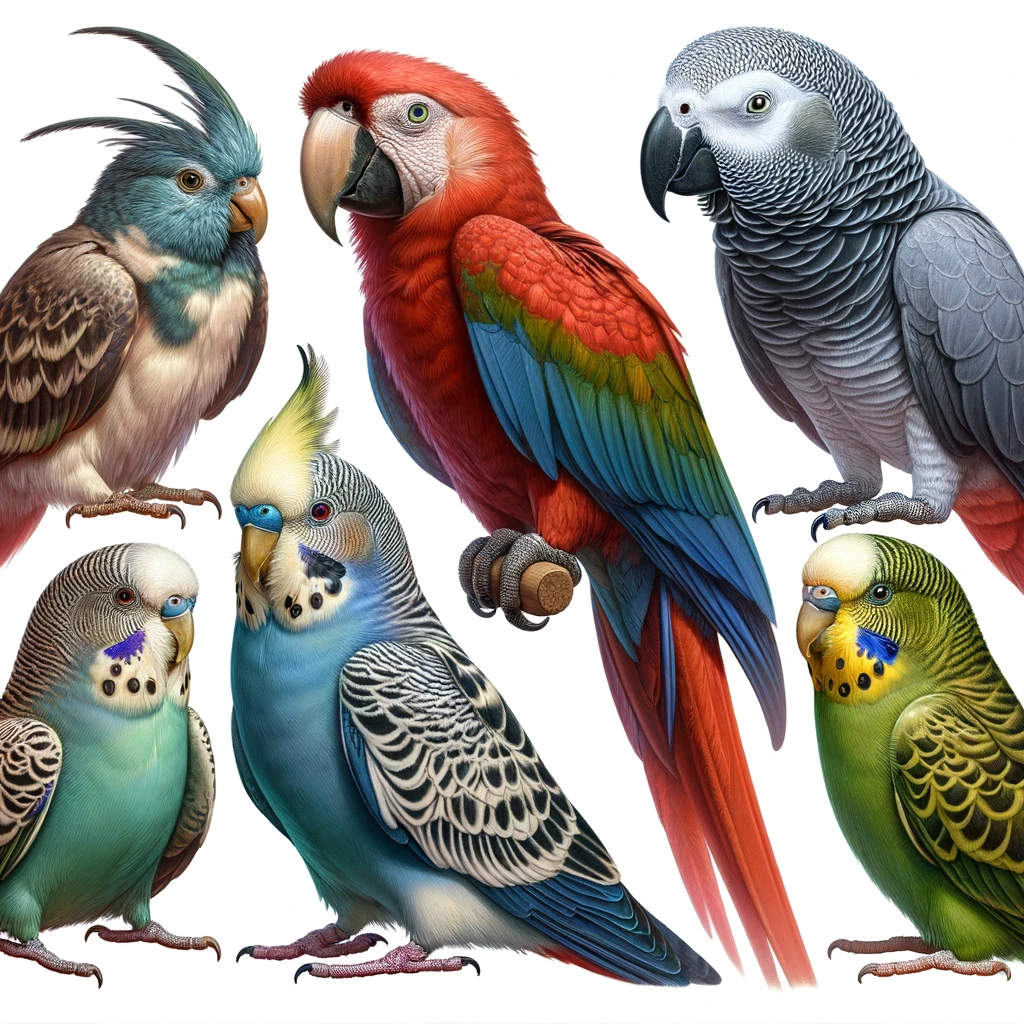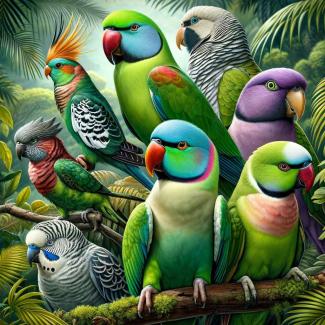
Psittaciformes: Exploring the World of Parrots
Nestled in the stunning Himalayan landscape, Nepal is home to an array of diverse plant and animal species, including a remarkable variety of birds. The fascinating Psittaciformes, or parrots, are of particular interest as they add to the rich biodiversity of this beautiful nation. In this comprehensive analysis, we take a deep dive into the taxonomy and the captivating presence of these birds in Nepal.
A Closer Look at Psittaciformes: Taxonomy Explained
Parrots, scientifically known as Psittaciformes, represent a diverse bird group characterized by features like curved beaks, strong legs, and eye-catching plumage. With over 400 species across 86 genera, they can be found in various ecosystems around the globe. The parrot family is mainly divided into three key subfamilies - Psittacoidea (True Parrots), Cacatuoidea (Cockatoos), and Strigopoidea (New Zealand Parrots) - each displaying unique behavioral and physical traits.
Psittacoidea is the largest of the three subfamilies within Psittaciformes, encompassing around 375 species across 14 different tribes. This subfamily boasts an incredible diversity in size, coloration, and habitat preferences. Cacatuoidea consists of 21 Cockatoo species native to Australia and Southeast Asia, known for their impressive crests and sturdy build. In comparison, Strigopoidea is a smaller subfamily with only five species endemic to New Zealand.
The Mysterious Parrots of Nepal
With habitats ranging from tropical foothills to alpine meadows, Nepal's rich avian diversity exceeds a staggering 900 species. Among these feathered inhabitants are several parrot species that call this picturesque country their home.
Two noteworthy Psittacidae family members grace Nepal's skies: the Rose-ringed Parakeet (Psittacula krameri) and the Slaty-headed Parakeet (Psittacula himalayana). These charismatic birds can often be seen flying through forested areas and cultivated lands across the nation.
The Rose-ringed Parakeet is adorned with bright green plumage and a distinctive collar encircling its neck. They thrive in various environments, such as deciduous forests, urban parks, and gardens, displaying exceptional adaptability and intelligence.
In contrast, the Slaty-headed Parakeet is primarily green-bodied with a slate-gray head, making it visually unique among other parakeets. With a preference for dense forests situated between 600 and 2700 meters above sea level, Nepal's sub-tropical and temperate woodlands provide an ideal home for this species.
Conservation Initiatives and Obstacles
Despite their mesmerizing presence, parrots face numerous threats that jeopardize their survival. Deforestation, habitat loss, the illegal pet trade, and climate change are some of the main factors contributing to their dwindling populations.
Nepal has demonstrated its commitment to preserving its diverse bird species by creating various protected zones. With approximately 23% of its land classified as national parks, wildlife reserves, and conservation areas, the Nepalese government has taken significant strides in protecting these incredible creatures' habitats.
In summary, examining the taxonomy of Psittaciformes and investigating their existence in Nepal allows us to better appreciate these magnificent birds. As guardians of our planet's biodiversity, we have a responsibility to ensure that future generations can continue to admire their beauty as they enliven our world with their vibrant hues and captivating charm.

